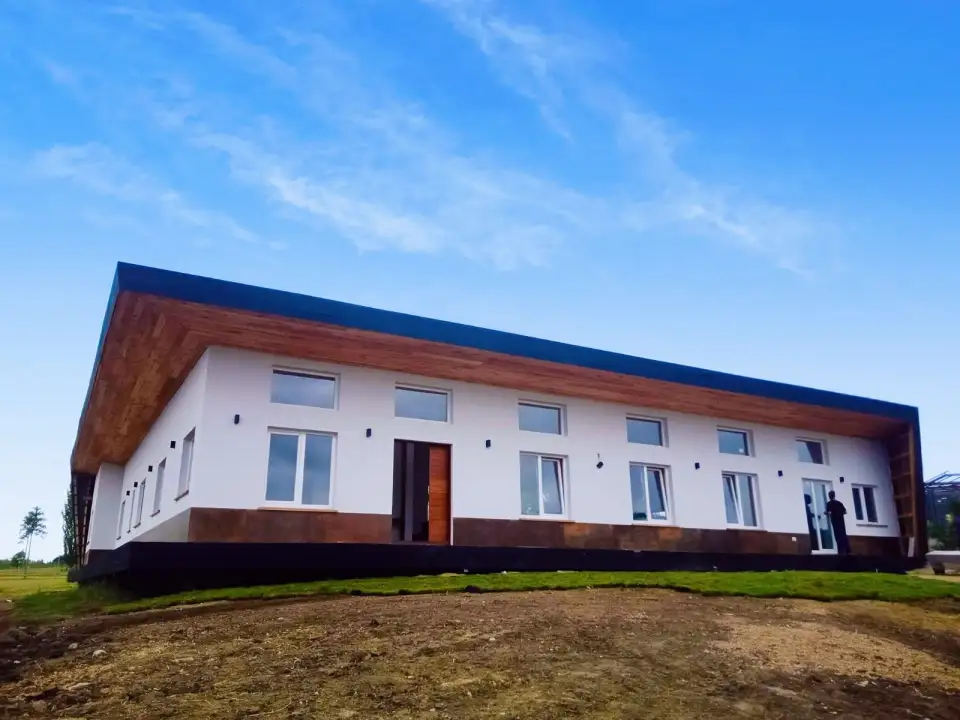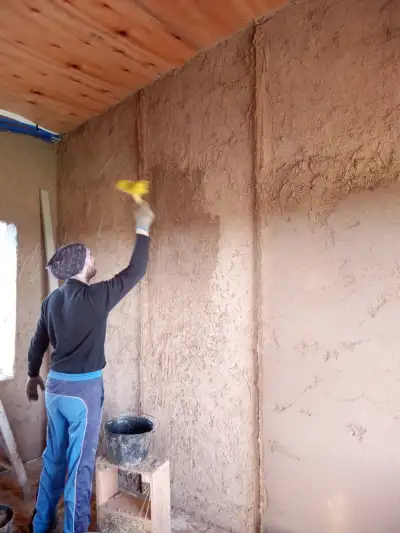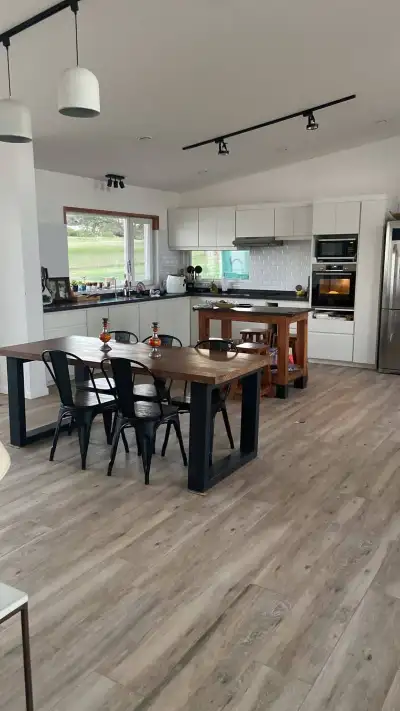In the department of Canelones, Uruguay, a modest but ground-breaking architectural gem has emerged, Casa AYA. Designed by Martin Comas of Arquitectura Regenerativa, this eco-friendly dwelling redefines sustainable living in Latin America. Casa AYA stands as a testament to innovation, combining straw bale construction with the Passive House approach, marking a significant milestone in the region's environmentally conscious architecture.

Casa AYA challenges conventional construction practices by achieving a remarkable 70% reduction in the use of concrete, compared to traditional building methods. The design team achieved this impressive feat by using locally sourced timber on raised foundations and straw bale insulation. This design decision reflects the essence of the project: reducing the environmental impact of the built environment, while providing a superbly comfortable, healthy home, with absurdly small energy bills.
We at Praxis Resilient Buildings were excited to contribute to this project by acting as the Passive House certifier. Comas reached out to us due to our proven track record working on bio-based Passive House projects in warm climates.

Straw bale innovation
The core innovation of Casa AYA lies in its use of prefabricated, compressed wheat straw panels for the floor and walls. Timber and straw bale construction are a perfect complement to the Passive House standard, as they sharply reduce a building's environmental footprint by slashing both upfront carbon and future operational emissions. The modules used on this project were crafted by a local company called BioFraming. The local contractors had no problems working with the materials and welcomed the opportunity to take part in a pioneering project, the first of its kind in the region.
Passive House and thermal excellence
One of the standout features of Casa AYA is its Passive House-compliant, thermal bridge-free envelope. With a minimum of 20 cm (7.9 inches) of thermal insulation meticulously integrated into the floor, walls, and roof, the house is optimized for energy efficiency. Both the floor and walls were insulated with 20-cm thick straw bales. The roof was insulated with 27 cm (10.6 inches) of cellulose insulation. Such attention to detail ensures that the home maintains a comfortable and consistent indoor temperature throughout the year.
Comas, the project architect, explains the path he had trodden to get here and his recent immersion in the world of Passive House, "Before 2019, our constructions were made of concrete, brick, and glass, without much real or conceptual technology. That was until I came across Passive House. It was a before and after thing…It's something that opens your mind and gives you tools to take architecture to a much higher level."

"At first, Passive House seemed very German to me…like, very far away. And I wondered...can this be done in Uruguay? Will I be able to find suppliers, labor, know-how, and so on…and at reasonable cost? Basically, I was asking myself: is it possible?"
"With this project we not only showed that it was possible, but also, we added some layers of difficulty. For example, we set out to have the smallest possible carbon footprint (using compressed straw wherever possible). And we also set out to build it cheaper than local standard construction, with local labor and in a similar timeframe. In the end we were able to achieve all these goals. It was very challenging, but we are very proud to have managed to raise the bar for construction in Uruguay, which—to be honest—is very low.”
To further celebrate its connection to the local environment, the walls of Casa AYA were plastered with clay sourced directly from the site, creating a harmonious union between the building and its surroundings. Furthermore, a mechanical ventilation system with heat recovery was installed, providing excellent indoor air quality with minimal heat loss.
The airtightness test yielded a result of 1.2 ACH50, which was not enough to achieve one of the project goals, PHI Low Energy Demand certification. Nonetheless, this value demonstrates that the home is almost 10 times more airtight than standard construction is in the area. This level of airtightness, when combined with controlled ventilation, improves thermal comfort, reduces heat loss and energy bills, and minimizes the risk of moisture damage and unnecessary maintenance costs.

Casa AYA is more than just a home; it's a symbol of sustainable innovation and a testament to what can be achieved when modern design meets an environmentally conscious mindset. This pioneering project in Carrasco, Uruguay, sets a new standard for environmentally friendly construction in Latin America, proving that we can live in harmony with nature while enjoying the comforts of contemporary living. Casa AYA's successful integration of modular straw bale construction with the Passive House standard serves as an inspiration for architects, builders, and homeowners looking to embrace a more sustainable future.
After handover, we asked the architect: what would you recommend to someone when buying or renting a home?
"I would recommend that, if you can, go visit someone who already lives in a Passive House, so you can hear a person explain, in a real and non-technical way, what it’s like to live in and what a high-performance house feels like that is designed and built for the climate of the next 50 years. That, I think, is fundamental for anyone who is thinking of building a house. When our clients, who’ve have already been living in these kinds of houses for a while, go to visit their parents or friends, they always comment on how different it is to live in a house with even temperatures in all spaces, that is damp-free, comfortable, and has great air quality."
We congratulate Martin Comas and the team at Arquitectura Regenerativa for designing and building one of the most sustainable homes, not only in the country, but also in the region.